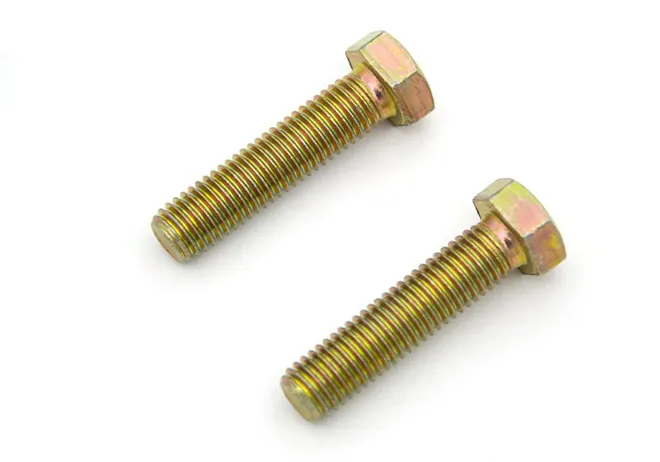Essential Guide to Choosing the Right Drywall Screws for Your Projects
វិច្ឆិកា . 27, 2024 07:58 Back to list
Essential Guide to Choosing the Right Drywall Screws for Your Projects
Understanding Drywall Screws The Essential Fasteners for Your Projects
When it comes to installing drywall, one crucial element often overlooked is the type of fastener used—specifically, drywall screws. These screws are designed explicitly for use with drywall sheets, making them indispensable for both professional contractors and DIY enthusiasts. In this article, we will delve into what drywall screws are, their benefits, and tips for using them effectively in your next project.
What Are Drywall Screws?
Drywall screws are specialized screws crafted for attaching drywall panels to wooden or metal studs. Typically made of steel, they are coated with a corrosion-resistant finish, which helps extend their lifespan, especially in damp environments. Drywall screws come in various lengths, typically ranging from 1 inch to 3 inches, and are available in two primary types coarse thread and fine thread.
Coarse thread screws are ideal for wood applications, where they can easily grip into the wooden studs. On the other hand, fine thread screws are designed for metal studs, ensuring a strong hold without damaging the metal. Understanding these distinctions is crucial for achieving a secure drywall installation.
Benefits of Drywall Screws
1. Strong Hold One of the primary advantages of drywall screws is their strong holding power. Unlike nails, which can work loose over time due to shifting, screws provide a more secure attachment that holds the drywall in place effectively.
2. Reduced Risk of Cracking When installing drywall, using screws minimizes the risk of cracking or damage to the drywall surface. Screws can be driven just below the surface of the drywall without causing it to crumble, allowing for a smooth finish.
3. Quick Installation Drywall screws can be installed quickly, especially when using a power drill or screw gun, making the drywall installation process more efficient. The use of a screw gun also helps control the depth of the screws, ensuring a consistent finish.
drywall screws

4. Versatility Drywall screws can be used for various applications beyond drywall installation. They are also suitable for fastening wood, securing corner beads, and even for use in certain home repair projects.
Tips for Using Drywall Screws
To ensure the best results when using drywall screws, following some best practices is essential
1. Pre-drilling While drywall screws are self-tapping, pre-drilling pilot holes in harder materials—like dense woods or metal—can help prevent the screw from breaking or bending.
2. Spacing When attaching drywall, screws should be spaced approximately 12 to 16 inches apart along the edges and 16 inches apart in the field (the center area of the drywall). This spacing provides adequate support and helps prevent sagging.
3. Countersinking It's important to sink the screws just below the surface of the drywall to allow for easy taping and mudding. A screw that remains above the surface can lead to an uneven finish and more work when you apply joint compound.
4. Proper Depth Adjust your drill for the right depth to ensure the screws are not over-driven, which can damage the drywall. Over-driven screws can create dimples that require filling and sanding before painting.
Conclusion
Drywall screws may appear to be a small component of the larger drywall installation process, but their importance cannot be overstated. With their strong hold, reduced risk of cracking, and quick installation, drywall screws make the task of hanging drywall more manageable and efficient. By understanding the types of drywall screws available and following best practices for their use, you can achieve a professional finish in your construction or renovation projects. Whether you're a seasoned contractor or a first-time DIYer, having the right screws at your disposal is one step towards achieving a flawless drywall installation.
Latest news
-
Reliable Axle Nuts Supplier | Quality & Precision Fasteners
NewsAug.23,2025
-
Durable Bolts for Lawn Mower Handle - Top Supplier & Manufacturer
NewsAug.22,2025
-
High-Quality Bolts for Lawn Mower Handle Supplier & Manufacturer
NewsAug.21,2025
-
Reliable Axle Nuts Supplier | High-Quality Automotive Parts
NewsAug.19,2025
-
Premium Wire Bolts Suppliers | Durable & Reliable Fasteners
NewsAug.18,2025
-
Leading Metric Wood Screw Companies & Manufacturers
NewsAug.17,2025
